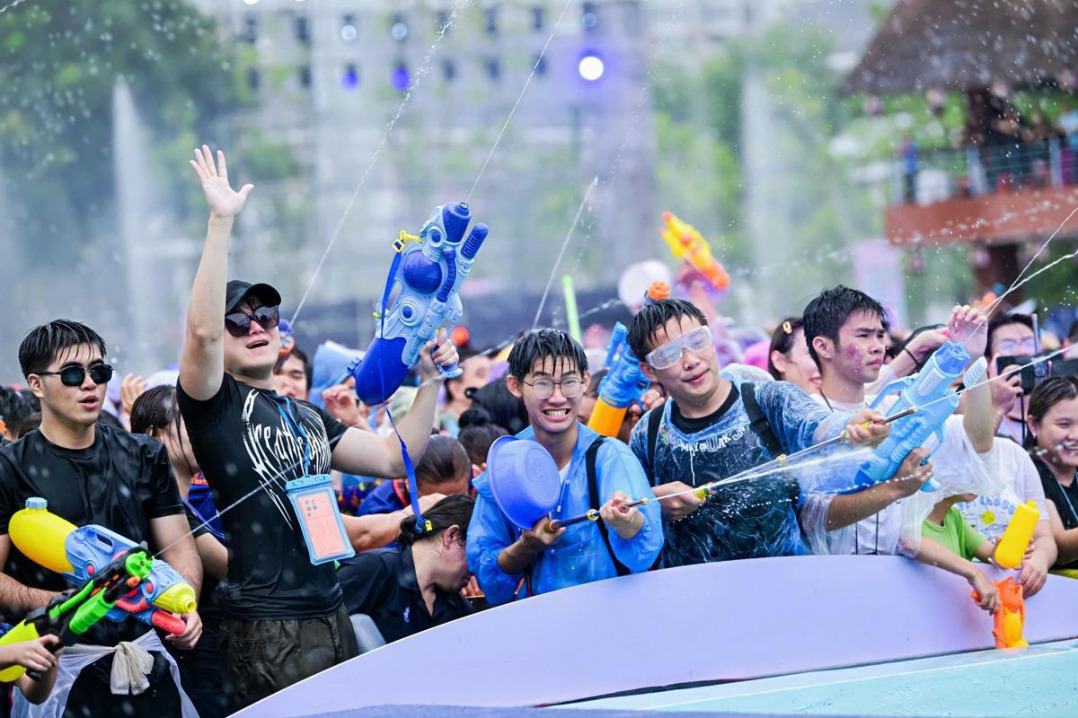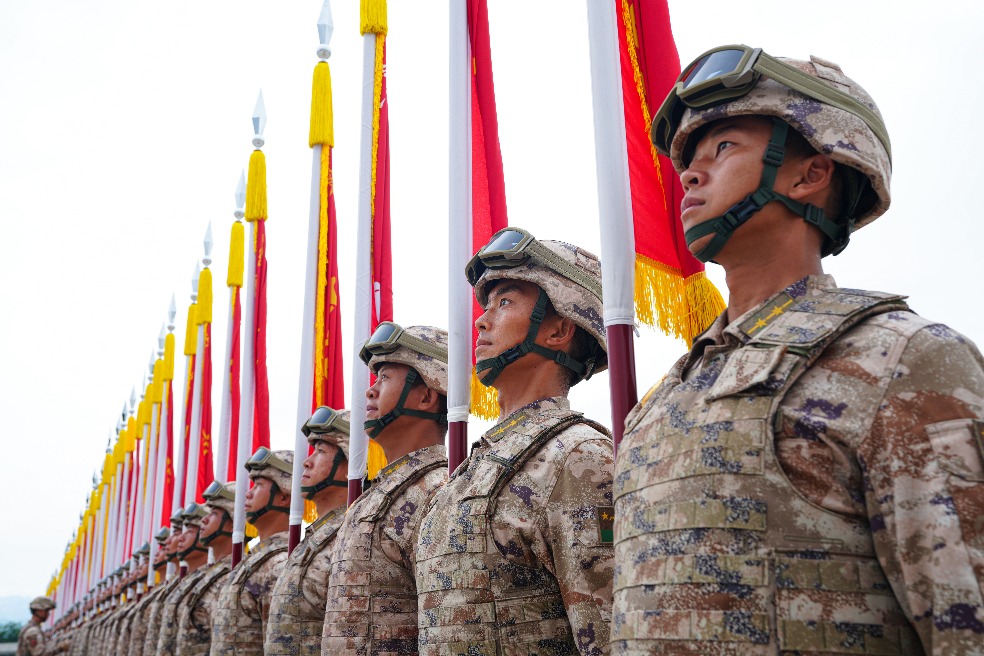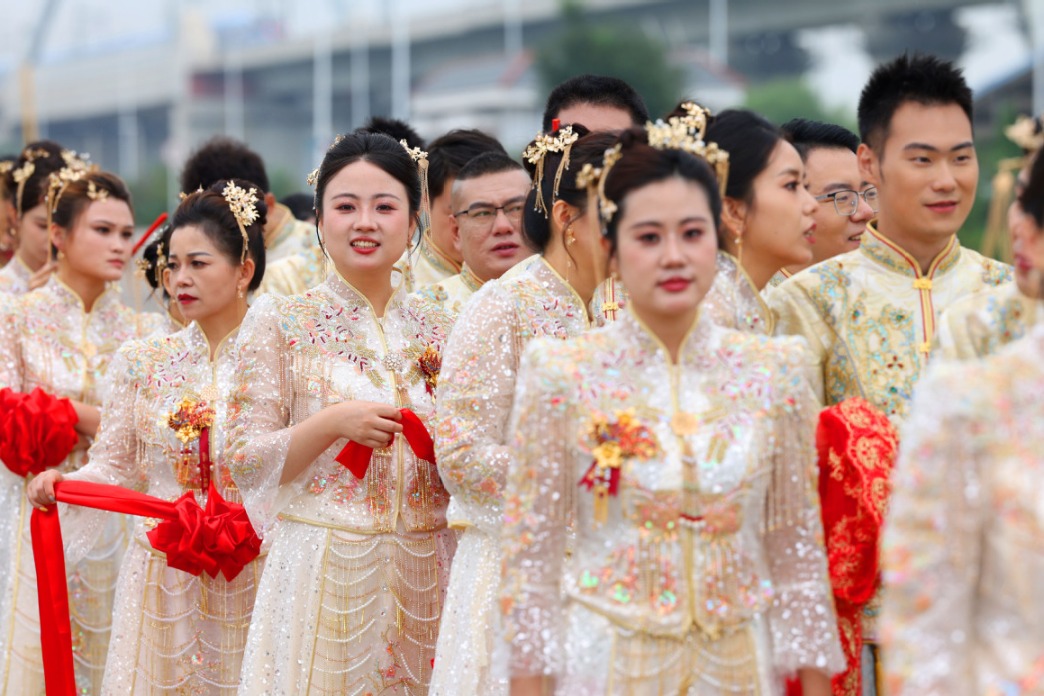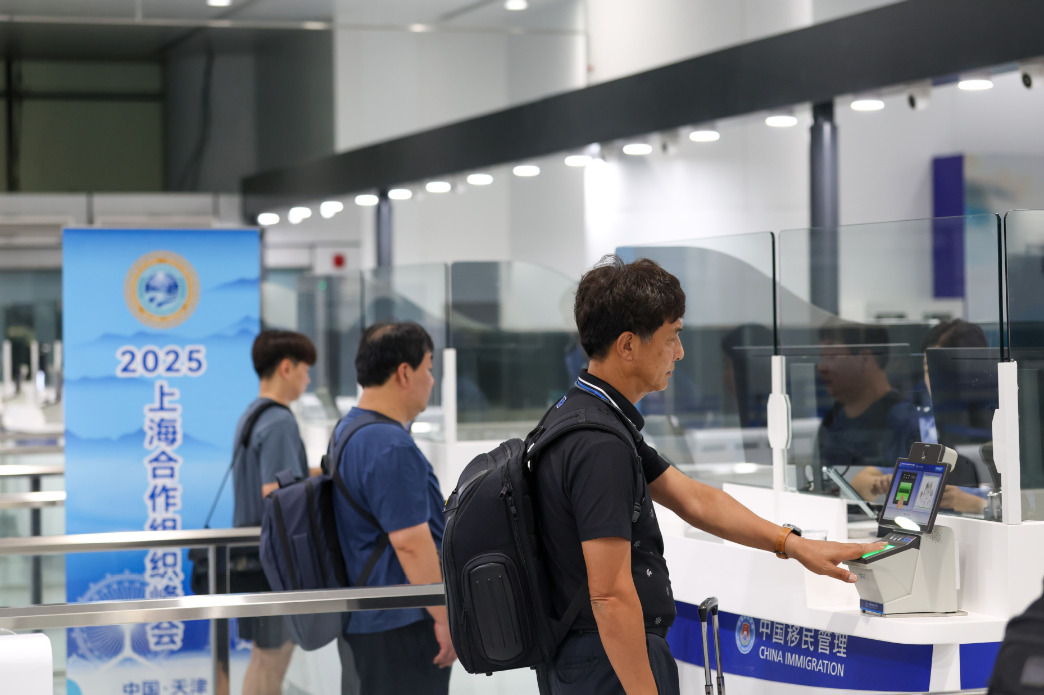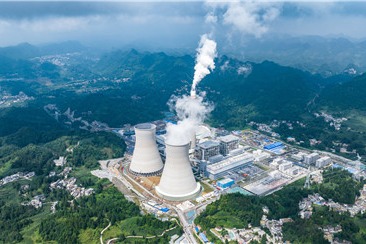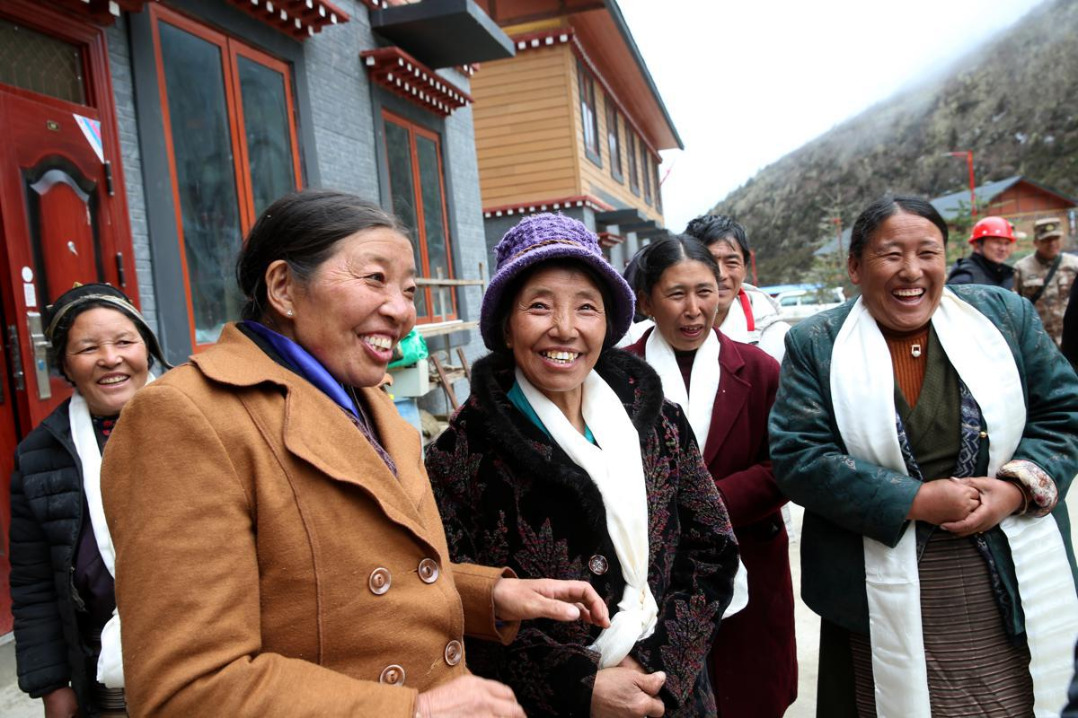Facing up to history


The painful memories of World War ii, including the Japanese occupation of Hong Kong, continue to haunt survivors and communities across Asia. Historians and scholars in the city are racing against time, piecing together crucial evidence of the Japanese army's atrocities to remind people of this bitter episode in history. William Xu reports from Hong Kong.
The Japanese army left behind a traumatic history of brutal abuse, pain and suffering across much of Asia during World War II, with Hong Kong being no exception.
Behind the glitz of Hong Kong's famous nightlife in Wan Chai district lies a distressing past. The lanes and alleys along Jaffe Road once echoed with the cries of "comfort women" — a euphemism for those forced into sex slavery by the Japanese army.
According to research, four premises to the east of Jaffe Road's junction with Luard Road were turned into "comfort stations", where women and girls were coerced or deceived into sexual servitude for Japanese soldiers during the Japanese occupation of Hong Kong, from Dec 25,1941 to Aug 30, 1945.
"It's still surprising to learn there had been 'comfort stations' in Wan Chai, although it's not entirely unexpected, considering the Japanese army committed similar crimes in other places in Asia," says Jacky Ko Chung-kit, a social worker and chairman of the KOL Workers Association.
It's estimated that at least 400,000 women in Asian countries were forced into sexual slavery by the Japanese military during World War II, with more than half of them from China. China's repeated demands for Japan to acknowledge and deal with the matter responsibly, as well as to issue an apology and provide adequate compensation, have fallen on deaf ears.

The passage of time over the past eight decades has seen the number of survivors of the Japanese occupation dwindle along with the evidence of the atrocities committed. In Hong Kong, traces of the four "comfort stations" that are known to have existed at Nos 98 and 101 Jaffe Road, and Nos 6 and 8-12 Luard Road, have been erased by post-war development and the reassignment of street addresses. Their existence can only be seen in a few wartime records.
Gleaming high-rise glass towers now stand where the "comfort stations" once were, and time has virtually erased the trauma of the victims of the Japanese invasion. However, scholars and artists are still trying to piece together the fading, fragmented bits of history through multimedia and technology, knitting archival evidence into digital tapestries to bridge generations, ensuring that the pains of war and the values of peace can be remembered.
"Private house used by the IJN (Imperial Japanese Navy) as comfort station", reads a tag for the four "comfort station" sites on the digital interactive map, Japanese Occupation of Hong Kong.
Developed by Hong Kong historian Kwong Chi-man and his team, the map emerged from spatial history research initiated in 2021, focusing on Japanese-occupied Hong Kong.
Through meticulous cross-examination of archival materials, researchers have identified and verified the locations of numerous facilities of major political, economic and military significance during the occupation. Each site has been plotted onto a base map stitched together from declassified US military aerial photographs taken during the war.

As of late August, the map documents more than 3,400 items, including administrative buildings, factories, commercial enterprises, pawnshops, guerrilla bases and Wan Chai's four "comfort stations".Each location is geographically pinpointed, categorically organized, and accompanied by descriptions and sources, forming a digital archive of wartime memory.
"We can now have a more comprehensive and visual understanding of the war's impact on Hong Kong's urban landscape," says Kwong, a history professor at Hong Kong Baptist University.
The placement of the "comfort stations "in Wan Chai was strategically deliberate, as clearly visible on the map. The area's proximity to the Japanese naval base at Admiralty turned it into a frequent destination for Japanese navy personnel. Within a 150-meter radius of the "comfort stations", historical documents confirmed the presence of two navy officers' clubs and two navy-affiliated restaurants.
In his memoirs, doctor Li Shu-fan, who co-founded the Hong Kong Sanatorium and Hospital, recalled that shortly after the fall of Hong Kong, a high-ranking Japanese officer openly demanded that he identify places where 500 women could be obtained for planned "comfort stations".Given the lack of comprehensive records, the actual number of victims is likely to be far greater.
Kwong speculates that the "comfort women" in the stations were sent to Hong Kong from other places, but more information concerning their experiences needs to be revealed by further studies.
Daniel Xia, a Chinese mainland teacher who's obsessed with Hong Kong history, notes that the stories of "comfort women "in Hong Kong remain largely unrecognized. "I think it's necessary to put up signs at the locations to remind people of this bitter part of history," he says.
Beneath the surface
Yet, some wartime memories remain uncharted on any map. For decades, one such story has rested silently at the bottom of the sea until transnational collaboration brought it to the surface.
On a two-hour, 40-minute flight from Hong Kong to Shanghai, passengers gazing down from the aircraft's windows could observe the coastal waters of Zhoushan, Zhejiang province, as the plane traces the East China coastline.
Beneath the calm ocean surface lie the remains of more than 800 Allied prisoners of war — soldiers who had defended Hong Kong in 1941. They were buried at sea after the Lisbon Maru — the 140-meter vessel transporting them — was torpedoed on Oct 1, 1942.
A few days before the incident, 1,816 prisoners were forced aboard the ship at Hong Kong's Stonecutters Island, to be taken to prison camps in Japan. The ship bore no markings to indicate it carried prisoners of war, triggering an attack by a submarine, the USS Grouper, in Zhoushan waters.
About 300 soldiers who escaped from the sinking ship were rescued by Chinese fishermen from nearby Dongji town and given food and shelter, hundreds boarded Japanese patrol boats, and the remaining were buried at sea.
"Many viewers left cinema halls in tears, shocked by such a little-known past and moved by the fishermen's humanitarian rescue," says movie director Fang Li, recalling the debut of his award-winning documentary, The Sinking of the Lisbon Maru, in Hong Kong in July.
Fang learned of the rescue story in 2014. His fascination with the mystery led him to contact Hong Kong historian Tony Banham, who has been investigating the Lisbon Maru since 1990. Through decades of work and drawing on international archives and survivors' testimonies, Banham, in his book The Sinking of the Lisbon Maru: Britain's Forgotten Wartime Tragedy, comprehensively reconstructed the event and documented the prisoners' experiences, along with other discoveries. At Fang's invitation, Banham became a historical advisor on the documentary.
"I felt we were in a relay race. He ran the first leg, and I the second," says Fang.
In 2017, Fang's team located the wreck, adding a crucial piece to the incomplete memory. In the following years, he traveled to the United Kingdom, Japan and Dongji town, interviewing rescuers, survivors, victims' families and descendants of those involved in the incident.
He also made three research trips to Hong Kong, visiting Sham Shui Po district, where prisoners of war were held captive, and other sites to collect materials.
Following an early screening in London in 2023, the 122-minute documentary was premiered on the mainland on Sept 6 last year, and won the Best Documentary Award at the 37th China Film Golden Rooster Awards. The production has been rated 9.2 out of 10 on Douban — one of China's most influential film review platforms. One review with over 4,900 upvotes remarks: "Thank you, Fang Li, for recovering a story on the verge of being forgotten."
Fang hopes the documentary will help Hong Kong audiences recognize the city's deep bonds with the mainland. "During the war, Hong Kong and the mainland stood united against the Japanese invasion. We shared the same hardships and the same destiny."
Race against time
More hidden atrocities committed by the Japanese army are expected to come to light with the declassification of wartime archives.
In July, Japanese scholar Seiya Matsuno donated the color scans of a long-classified roster of Unit 8604, a Japanese army unit stationed in Guangzhou during the war, to the Guangdong Provincial Archives. The list is deemed by historians as key evidence of the Japanese military's bacteriological warfare in southern China, with tens of thousands of Hong Kong residents possibly among the victims.
After occupying Hong Kong, the Japanese military forcibly or deceptively deported almost 1 million residents to the mainland due to food shortages. Many were transported by sea to Guangzhou and confined to a refugee camp in Nanshitou in present-day Haizhu district, where large numbers of them perished.
"The Japanese authorities in Guangzhou didn't want the inflow of refugees to disrupt social order," says Tan Yuanheng, a retired professor at the South China University of Technology, and a decadelong researcher of the Nanshitou camp.
Unit 8604, officially named as the epidemic prevention and water supply department in South China, was established in Guangzhou after the city fell in 1938. However, according to the testimony of former member Shigeru Maruyama, disclosed in the 1990s, the unit was also involved in carrying out germ warfare experiments.

Maruyama said he was ordered by the unit's leader to put salmonella in refugees' soup. Testimonies from survivors and local residents also told of refugees being locked indoors to be bitten by mosquitoes or injected with unknown substances that caused severe skin ulcers.
Tan estimates that the number of Hong Kong and Guangdong victims of bacteriological warfare in Nanshitou could have exceeded 100,000.
Further evidence relating to the camp remains to be uncovered. During March's two sessions — the annual gatherings of the National People's Congress and the National Committee of the Chinese People's Political Consultative Conference — Hong Kong NPC deputy Grace Ling Yu-shih suggested resuming the previously suspended investigation and the preservation of sites linked to the Nanshitou camp.
"We're racing against time to discover and protect evidence," she told China Daily.
On Aug 15, an hourlong documentary revealing the untold atrocities in Nanshitou premiered in Hong Kong at a ceremony marking the 80th anniversary of Japan's unconditional surrender in World War II. "Through videos, we hope to ignite greater attention to the story of Nanshitou," says director Yang Jun.
A total of 78 heritage sites related to World War II across Hong Kong had been designated as monuments or historic buildings. The Lion Rock War Relics Trail, which was part of a defense line in the war, has set up 16 interpretation points introducing the war ruins along the way. Similar interpretation panels will be added to the Shing Mun and Luk Keng war relics trails, according to the Hong Kong Special Administrative Region government.
The Antiquities and Monuments Office has appealed to the owners of wartime historic sites to install information plaques, providing a one-off service for plaque design, fabrication and installation.
Hiking enthusiast Mary Huang says she often noticed tablets recording historical events in Hong Kong's outdoor trails. "This is a very good way of reminding the people of history," she says.
"Preserving wartime memories isn't meant to incite hatred against specific nations," says director of the Society of Hong Kong History, Billy Tang Ka-Jau, who authored a book chronicling how Hong Kong communities supported the mainland's anti-aggression efforts between 1937 and 1941.
During that turbulent period, people across all walks of life in Hong Kong -from street vendors to British officials, monks and artists — actively donated money to support the mainland's resistance efforts, reminisces Tang.
"We had persevered in resistance under dire circumstances. It was not merely a response to being attacked — we stood up to the toxic ideologies that led to the war, such as Japan's militarism."
Contact the writer at williamxu@chinadailyhk.com


















